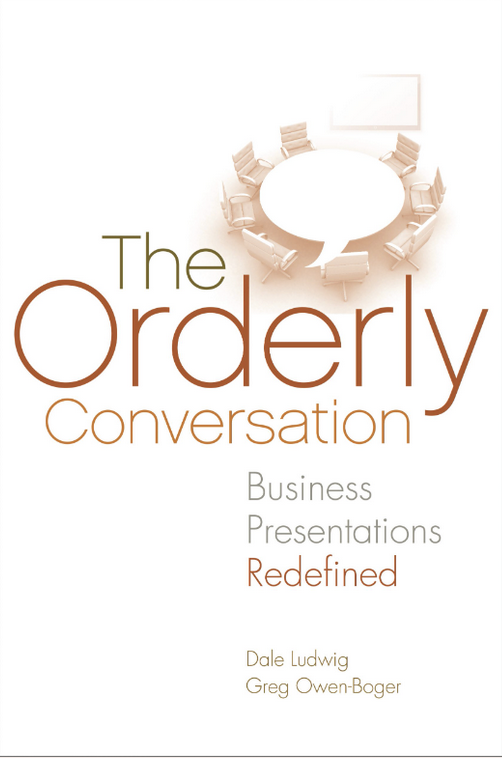
- Dale Ludwig Leadership
Humility is One of the Fifteen Facets of Executive Presence
This article is one in a series focusing on Executive Presence and how leaders can meet their potential through improved communication. Executive Presence is defined by Suzanne Bates in her book “All the Leader You Can Be: The Science of Achieving Extraordinary Executive Presence” as “The qualities of a leader that engage, inspire, align, and move people to act… By understanding how your intentions as a leader match up with perceptions, you can learn how to flex your style to gain trust, build alignment, lead change, inspire performance, and drive executional excellence.”
This article focuses on Humility, one of the 15 facets that make up a 3-dimensional leader.
Click here to gain a greater understanding of (a) executive presence in general and (b) the other facets that make up a well-rounded leader.
What is Humility?
Bates describes Humility, one of the fifteen facets of executive presence, as “showing awareness of one’s strengths and weaknesses, an openness to others, and a belief that all people have worth.” People with a high level of Humility are modest and comfortable acknowledging that they don’t know everything. They are willing to ask for others’ ideas and opinions, and a spirit of inquiry.
How Humility Makes People Feel
People who demonstrate a healthy level of Humility put others at ease. They are curious and never project a manner that assumes they are better than anyone else. The feelings Humility generates in others are these:
- I feel that I can speak up around you.
- I feel like an important part of the team.
- I feel like an equal, regardless of position or rank.
- I appreciate your willingness to ask for help when you don’t have all the answers.
- I trust you to facilitate meetings because you are always open and interested.
Not Enough Humility
When someone lacks Humility, they may be perceived as arrogant and condescending. They may
- Take credit when it is not theirs to take
- Pull rank
- Exude excessive pride or self-confidence
Specific Behaviors to Improve Perceptions of Humility
Here are some behaviors and techniques you can use to improve the impression of Humility:
- When leading a meeting, ask others for their input.
- Acknowledge your weaknesses and ask for help.
- Pause and listen well, even when the message is hard to hear.
- Take responsibility when things don’t go well.
- Share credit when things do go well.
- Thank others for their input.
- Allow others to take the lead.
Too Much Humility
When someone exhibits too much of a particular facet, it can become an overstrength. An overstrength often results in negative perceptions. Here are some downsides of an overstrength in Humility:
- You may appear indecisive.
- You display discomfort with praise.
- People may assume that you have no opinion.
- Your leadership may be uninspiring.
- You may apologize too much.
A Story About a Lack of Humility
Mark was new to the Learning and Development team. He had just received his PhD the year before and was anxious to apply his knowledge to his new job.
His first project was to deliver training to the sales team. The classes were well-designed, but Mark struggled with delivery. He talked a lot about himself and his education, but he failed to make the examples he used resonate with the learners and, at times, seemed condescending. As a result, the salespeople were impatient, annoyed, and resistant. “This guy knows nothing about what we actually do,” was the most common response from the learners.
Mark checked in with his manager, Eleanor, after one of the sessions to tell her how frustrated he was with the response he was getting. Eleanor had observed his training that day. Here’s their conversation.
Mark: They’re not interested in what I have to say.
Eleanor: That’s true. But from what I’ve observed, Mark, you’re not working hard enough to engage them. You have to remember they’re busy people. And, frankly, they don’t care a bit about your education or past successes.
Mark: I thought I was building my credibility.
Eleanor: You can build your credibility by focusing on them and their needs. You don’t have to be the smartest person in the room. Here are my recommendations.
- Listen better and wait to respond.
- Don’t assume that your credibility springs from what you know. It comes from your ability to make training content relevant and important to them.
- Be curious about their jobs and their needs. Find ways to place your content in their context.
As difficult as it was, Mark took Eleanor’s advice and became a much more effective trainer.
Some Facets Ride Together
Often, when we lean into particular facets (or pull back from them), other facets “come along for the ride.” This is true for Mark. Over time, as he worked on implementing his manager’s advice, perceptions of his Restraint and Demeanor showed improvement. Mark probably also has an overstrength in Self-Confidence, so that showed improvement as well.
Final Thoughts About Humility
Humility is in the Character dimension of the Bates model, which means that it is an aspect of our personalities developed early in life. Because it is a personality trait that seems to be built in from the very beginning, we sometimes don’t even think about it until someone points out that we’re particularly good at or lacking in it. This is why growing your self-awareness as you continue on your leadership journey is so important.
If you’d like to learn more or explore executive presence coaching options for yourself or your team, click here to schedule a call.

